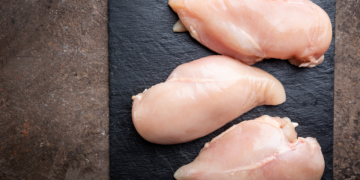If you’re new to cooking for your dog, here are some tips to help you prepare healthier meals:
Use a couple of proteins
- this provides a range of amino acids + important trace minerals
- e.g. frozen oysters are a very good source of zinc which is often at inadequate levels in homemade recipes
Use a couple of vegetables or fruits
- include those that are prebiotics
- e.g. pumpkin and burdock root help improve digestion
Carbohydrates are optional
Make sure to add fat (oils)
- this ensures they get enough omega-6, omega-3, vitamin A, D & E
Extras are really important
- turmeric, wheat germ, flaxseed, ground egg-shells, etc ~ add antioxidants, important trace minerals, vitamin E and more
Minimally cook proteins
- this retains maximum nutritional goodness
- food structures change and some degrade with heat
Cooking instructions in our recipes usually recommend:
- finely dicing vegetables and cooking them a little first
- turning off heat when meats are almost cooked
- adding oils and extras at the end after cooking is done
We also suggest cooking small batches of food that can be finished in 2 – 3 days.
This makes it easier to feed your dog different recipes with different ingredients which is strongly encouraged.
Food diversity helps gut health.
Good gut health is a cornerstone of immune strength.
Don’t be afraid to mix things up. It is OK to have a cheat day when you are tired or have no time. You can read more about different food options here.
It is important to know which foods are toxic. This article “Toxic Food For Dogs” shares how much of each ingredient causes toxicity.
Here are other articles to help you understand how best to feed your dog:
- How nutrition studies changed the way we cook for our dogs
- Things To Know When Cooking For Dogs ~ role of protein, fat, etc
- Minerals ~ which minerals to pay attention to
- Vitamins ~ which vitamins to pay attention to
- Good Poo Bad Poo
If You Enjoyed Our Content
please consider buying us a coffee / sending us dog treats



